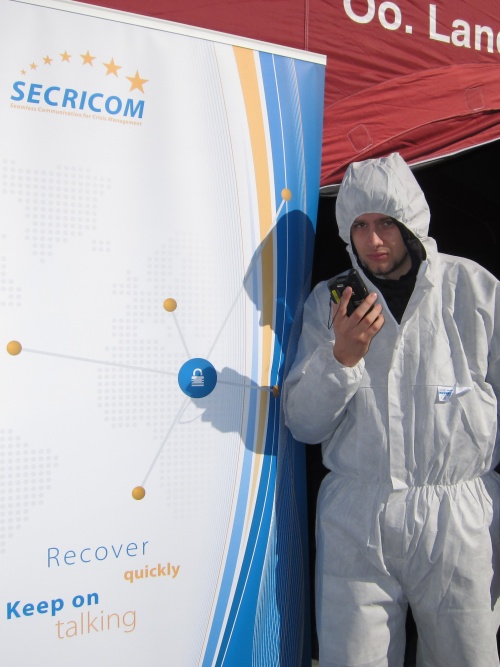|
 SECRICOM was an FP7 collaborative research project in 2008-2012. Its aim was to create Seamless Communication for Crisis Management for EU safety. Thirteen partners from eight EU countries had united their capacities in order to produce a competetive solution for secure communication and collaboration of emergency responders with advanced functions. The project was co-funded from FP7 programme. SECRICOM was an FP7 collaborative research project in 2008-2012. Its aim was to create Seamless Communication for Crisis Management for EU safety. Thirteen partners from eight EU countries had united their capacities in order to produce a competetive solution for secure communication and collaboration of emergency responders with advanced functions. The project was co-funded from FP7 programme.
Project idea arose from European Security Research Advisory Board (ESRAB) report in 2006. It was setting the European security research agenda and the requirements on new communication infrastructures. These requirements included security, dependability, enhanced connectivity, transmission of multiple formats and advanced search functions.
... a system that ensures end-to-end secure transmission of data and services across heterogenous infrastructures with real time detection and recovery capabilities against intrusions, malfunctions and failures ...
In response to these ESRAB requirements, the collaborative research project SECRICOM was proposed by consortium of ICT and security specialists. After evaluation and negotiation with the funding sponsor (the EC) the SECRICOM project started on 1st September 2008 and has conducted its activities until April 2012.
SECRICOM has reached all of its objectives set at preparation stage. It has obtained positive evaluation by review team of European Commission, the co-funding provider. The project has demonstrated its achievements within an integrated communication infrastructure:
1) Cross system/platform communication – SECRICOM Silentel
- Communication servers and gateways
- Services and applications for various types of modern devices
- Interoperability with legacy systems
- Integrated with distributed computing and process automation – smart agents
2) Security
- Non-repudiation, authenticity, integrity, confidentiality, accountability
- User authentication, state-of-the-art encryption
- Trust in hardware platform and execution environment
- Trusted docking station concept
- Chip-level security – Secure docking module (SDM)
- Threats and intrusion detection/monitoring
3) Quality of service
- Ready for internet protocol version 6
- Monitoring, prioritization – Monitoring and Control Centre
- Comfort of use – hide security from users
4) Resilient connectivity
- Multi-Bearer-Router
- Extendable and on-site deployable network
5) Integrated and demonstrated
- Final demonstration in user plausible context of scripted scenarios
- Extensive testing results
|